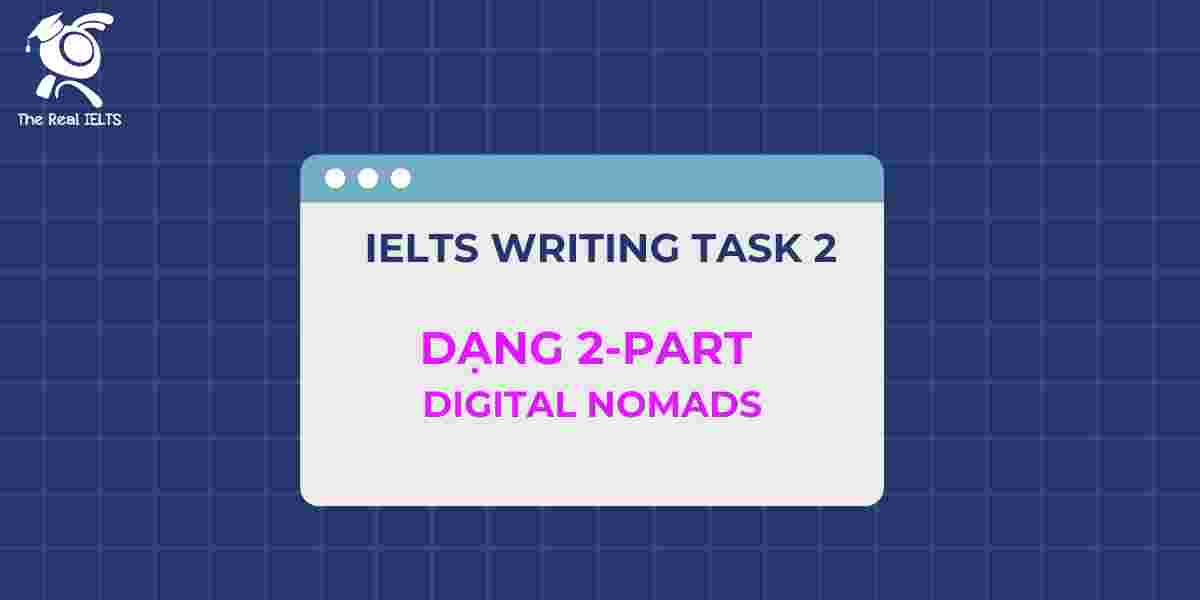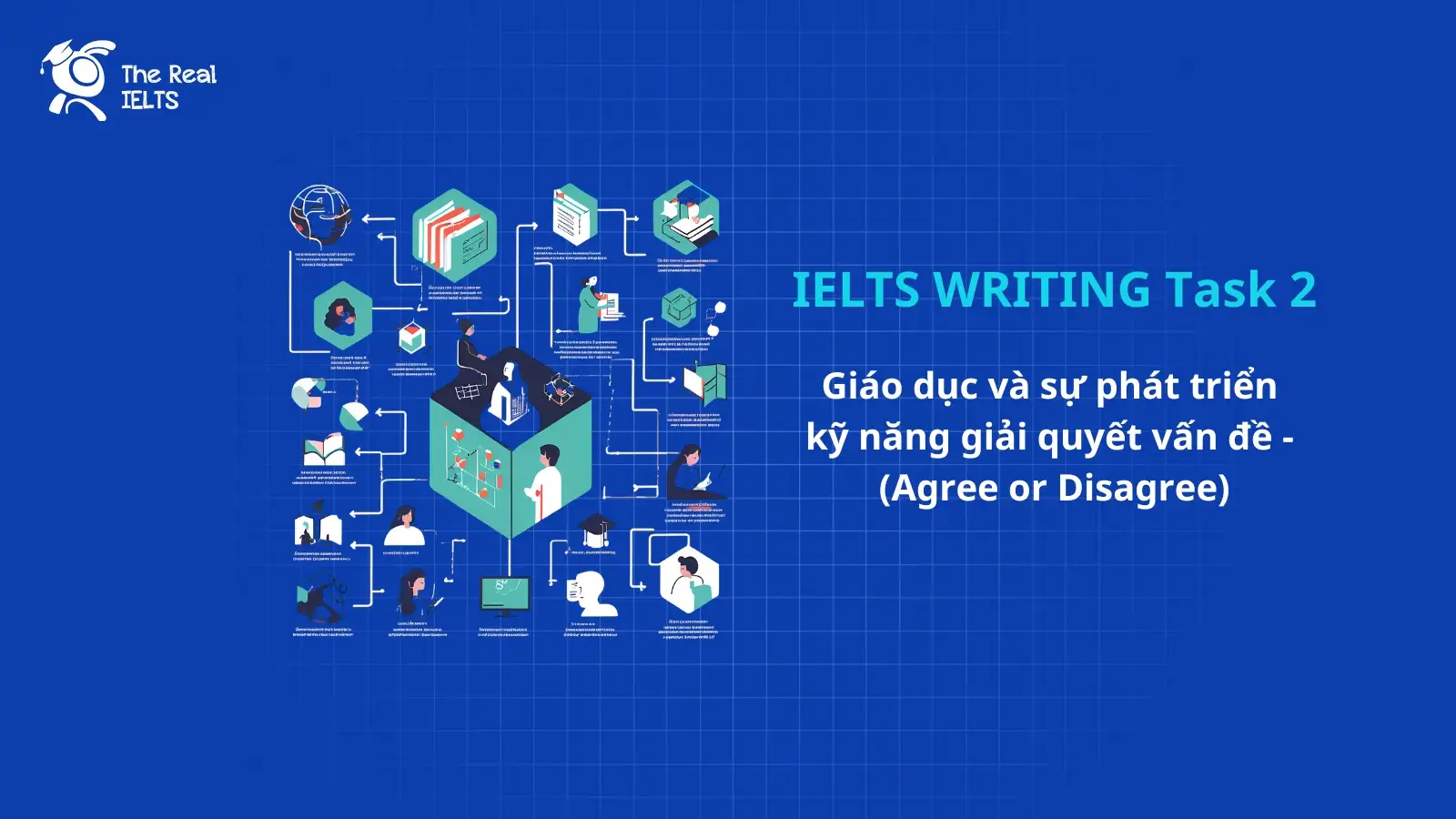Đề bài IELTS Writing task 2 dạng 2-Part digital nomads
You should spend about 40 minutes on this task
The number of digital nomads is on the rise. What are the reasons for this? How can people research this?
Write at least 250 words.
Bài mẫu IELTS Writing Task 2 dạng 2-Part
The phenomenon of digital nomadism has seen a significant rise in recent years, with more individuals choosing to work remotely while traveling the world. There are various reasons for this trend, and people can research it effectively through multiple avenues. I agree that the increase in digital nomads is a notable trend, but I believe that the full extent and sustainability of this lifestyle warrant deeper exploration.
One of the primary reasons for the rise of digital nomads is the advancement of technology. High-speed internet, cloud computing, and digital communication tools like Zoom and Slack have made it easier for people to work from anywhere. Additionally, the global shift toward remote work during the COVID-19 pandemic has normalized the concept of working outside traditional office environments. Many companies now offer flexible work arrangements, allowing employees to work from any location they choose.
Another reason is the desire for a better work-life balance and the opportunity to explore different cultures. The traditional nine-to-five job can be restrictive, and many people are seeking more freedom in how they manage their time. Digital nomadism offers the flexibility to travel and work simultaneously, which can lead to a more fulfilling lifestyle. Moreover, the cost of living in some countries is significantly lower than in others, making it financially viable for digital nomads to live comfortably while saving money.
To research this trend, individuals can start by exploring academic studies and articles published in journals that focus on remote work trends. These sources often provide data and insights into the motivations and challenges faced by digital nomads. Additionally, online forums, blogs, and social media groups dedicated to digital nomadism can offer firsthand accounts and practical advice from those currently living the lifestyle. Conducting surveys or interviews with digital nomads can also provide valuable qualitative data.
However, it is important to note that while the lifestyle appears appealing, it is not without its challenges. Issues such as visa restrictions, inconsistent income, and social isolation are common among digital nomads. Therefore, while the trend is on the rise, the long-term viability and attractiveness of this lifestyle may vary depending on individual circumstances and the ability to adapt to its demands.
In conclusion, the rise in digital nomadism can be attributed to technological advancements and the desire for a more flexible lifestyle. Researching this trend requires a combination of academic study and engagement with those who have firsthand experience. While digital nomadism offers many benefits, it is essential to consider the challenges that come with this way of life.
Thống kê cấu trúc câu và cấu trúc ngữ pháp
1. Cấu trúc câu:
- Câu phức (Complex Sentence): Câu bao gồm mệnh đề chính và mệnh đề phụ, giúp bổ sung ý nghĩa cho câu.
- Ví dụ: “One of the primary reasons for the rise of digital nomads is the advancement of technology.”
- Câu ghép (Compound Sentence): Câu bao gồm hai mệnh đề độc lập được nối với nhau bằng liên từ kết hợp như “and”, “but”, “or”.
- Ví dụ: “The traditional nine-to-five job can be restrictive, and many people are seeking more freedom in how they manage their time.”
- Câu ghép phức (Compound-Complex Sentence): Câu bao gồm ít nhất hai mệnh đề độc lập và một hoặc nhiều mệnh đề phụ.
- Ví dụ: “However, it is important to note that while the lifestyle appears appealing, it is not without its challenges.”
2. Cấu trúc ngữ pháp:
- Mệnh đề quan hệ (Relative Clause): Sử dụng để bổ nghĩa cho danh từ hoặc đại từ.
- Ví dụ: “Many companies now offer flexible work arrangements, allowing employees to work from any location they choose.”
- Cụm danh từ (Noun Phrase): Một danh từ chính kết hợp với các từ khác (như tính từ, mạo từ, giới từ) để tạo thành cụm từ.
- Ví dụ: “The phenomenon of digital nomadism.”
- Cụm động từ (Verb Phrase): Bao gồm một động từ chính và các từ bổ trợ như trợ động từ hoặc trạng từ.
- Ví dụ: “To research this trend.”
- Thể bị động (Passive Voice): Câu được cấu trúc sao cho chủ ngữ là đối tượng chịu hành động.
- Ví dụ: “These sources often provide data and insights into the motivations and challenges faced by digital nomads.”
- Liên từ kết hợp (Coordinating Conjunctions): Sử dụng để nối các mệnh đề hoặc từ trong câu.
- Ví dụ: “and”, “but”, “or”.
3. Từ kết nối trong bài essay:
Kết nối giữa các câu:
- However: Tuy nhiên (Sử dụng để diễn tả sự tương phản)
- Moreover: Hơn nữa (Sử dụng để bổ sung thông tin)
- Additionally: Thêm vào đó (Sử dụng để bổ sung thông tin)
- Therefore: Do đó (Sử dụng để chỉ kết quả của một ý tưởng trước đó)
- In conclusion: Kết luận (Sử dụng để bắt đầu đoạn kết luận)
Kết nối giữa các đoạn:
- In recent years: Trong những năm gần đây (Sử dụng để mở đoạn giới thiệu vấn đề)
- One of the primary reasons: Một trong những lý do chính (Sử dụng để giới thiệu lý do đầu tiên)
- Another reason: Lý do khác (Sử dụng để giới thiệu lý do thứ hai)
- To research this trend: Để nghiên cứu xu hướng này (Sử dụng để chuyển sang phần cách nghiên cứu)
- It is important to note: Điều quan trọng cần lưu ý (Sử dụng để đưa ra ý kiến hoặc lưu ý quan trọng)
Các từ vựng tiếng Anh cần lưu ý trong bài viết
- Phenomenon – Hiện tượng
- Digital nomadism – Lối sống du mục kỹ thuật số
- Trend – Xu hướng
- Advancement – Sự tiến bộ
- High-speed internet – Internet tốc độ cao
- Cloud computing – Điện toán đám mây
- Digital communication tools – Công cụ giao tiếp kỹ thuật số
- Remote work – Công việc từ xa
- Flexible work arrangements – Sắp xếp công việc linh hoạt
- Work-life balance – Cân bằng giữa công việc và cuộc sống
- Traditional nine-to-five job – Công việc truyền thống từ 9 giờ sáng đến 5 giờ chiều
- Fulfillment – Sự hài lòng, sự mãn nguyện
- Financially viable – Có khả năng tài chính, khả thi về mặt tài chính
- Academic studies – Các nghiên cứu học thuật
- Remote work trends – Các xu hướng làm việc từ xa
- Motivations – Động lực
- Qualitative data – Dữ liệu định tính
- Challenges – Thách thức
- Visa restrictions – Hạn chế về thị thực
- Inconsistent income – Thu nhập không ổn định
- Social isolation – Sự cô lập xã hội
- Long-term viability – Tính khả thi lâu dài
- Sustainability – Tính bền vững
- Appealing – Hấp dẫn
- Engagement – Sự tham gia, sự cam kết
Đọc thêm về bài viết gợi ý luyện thi IELTS.















